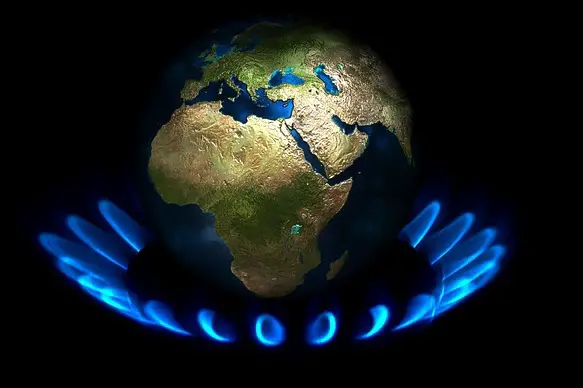This week, Oilprice issued a report which found that as the EU begins to enter the winter heating season’s peak energy consumption period and demand from an economically recovering Asia is rising, the price of natural gas is set to rise, despite the ample supplies of liquified natural gas (LNG) available globally.
The outlet noted that a range of factors have come together to produce the situation, including the geopolitical tensions which led to the recent seizure of a ship by Houthi rebels. In addition, from restrictions in the Panama Canal due to low water levels, resulting from an ongoing drought, to threats to shipping in the Suez Canal, supply chain issues have been adding upward pressures on global LNG prices.
Oilprice wrote, “Vulnerability to any occurrence that can influence prices was made crystal clear earlier this week when European benchmark prices jumped after the news broke of Houthis seizing a cargo ship in the Red Sea.” Because the ship was associated with an Israeli company, the seizure was perceived to be a potential escalation of the Israeli conflict with Hamas in the Gaza Strip.
However the report notes the situation is not entirely clear, with S&P Global pointing out that some experts in the gas trading industry are arguing that LNG supply and delivery to Europe is not as susceptible to disruptions by the conflict in the Middle East, and therefore the price of LNG likely will not climb much higher, despite any geopolitical risks in the region.
Others, however feel that all sorts of commodity prices have proven susceptible to shipping news, due to restrictions in the shipping of products due to the situation in the Panama Canal, and the heightened risks ongoing in the Suez Canal due to the Israeli conflict.
The report pointed out that buyers in Asia have also been seeking out alternative shipping routes for LNG cargoes due to the limited shipping passing through the Panama Canal, which has become a chokepoint for shipments between the Atlantic and Pacific oceans. It is expected this will increase freight rates across the board.
Oil Price wrote, “Speaking of supply, it may be plentiful, but as last year’s Freeport outage demonstrated, this abundance is one outage away from a disruption and a price spike.”
Problems in the energy markets of Europe began with the Western sanctions levied against Russia last year in response to the war in Ukraine, which eventually led to problems with the flows through the Nord Stream 1 pipeline. Escalating geopolitical tensions eventually saw a sabotage bombing of the pipeline which completely eliminated its flows to Europe.
In response Europe rapidly scaled up imports of super-chilled LNG cargoes, however an explosion at the massive Freeport gas export facility in the United States in June shut the facility’s exports down for the remainder of the year. The facility reopened in February of this year, however the force majeure triggered a spike in gas prices throughout Europe.
Oilprice concluded that as Europe now heads into the winter heating season, gas prices appear poised to climb higher on the continent, although global prices may prove more resilient.
A situation similar to the 2021 energy crisis, when gas prices surged to over €300 ($320) per megawatt hour, was narrowly averted last year after the EU worked to build up stocks and the winter proved warmer than usual.
This week, gas prices in Europe were volatile as a potential higher heating demand due to the cold weather, was weighed by traders against the fact EU storage facilities remain at nearly full capacities. Front-month Dutch TTF Natural Gas Futures, the European benchmark for gas traders, was trading on Wednesday 1.3% down, at $44.66 per megawatt-hour as of 11:04am GMT.

